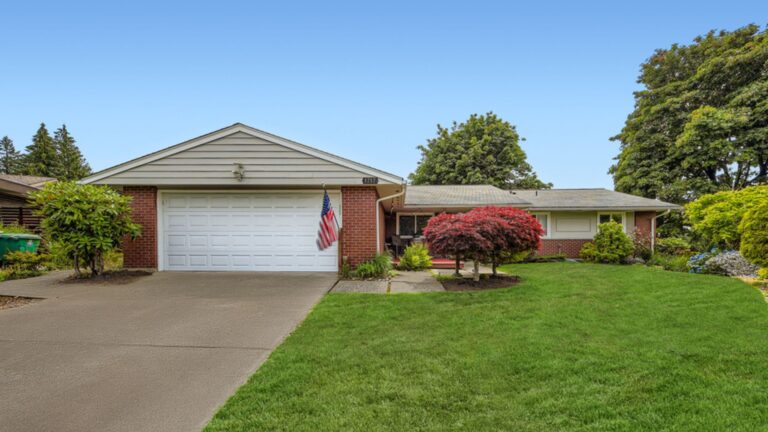With over 2 million real estate agents in the U.S., competition is fierce—especially in major cities like Los Angeles, Phoenix, and Houston. To stand out, you need a marketing strategy that keeps you top of mind without adding to your stress—insert the power for email marketing.
Real estate email marketing helps you land more clients and gain word-of-mouth referrals, but getting started can feel overwhelming. This guide covers everything you need to know to create effective email campaigns that attract buyers, close more deals, and grow your business.
What is email marketing?
Email marketing is a digital strategy that uses targeted emails to engage potential and existing clients, build relationships, and drive sales.
In real estate, it helps agents stay top of mind by sharing listings, market insights, and personalized content. A well-crafted email campaign nurtures leads, boosts referrals, and keeps clients informed throughout their buying or selling journey.
Real estate email marketing tools
To get started with email marketing for real estate brokers, you need to know which tools and platforms to use.
One of the most popular email marketing tools is Mailchimp, which is free to use if you’re storing less than 2,000 email contacts. It’s easy to use, which is why so many different businesses use it. When it comes to the best email marketing service for real estate, Mailchimp is one of them. However, other options are specifically made for real estate agents.
Other email marketing tools include:
- BoomTown
- Follow Up Boss
- Propertybase
Each of these options have features that make it easy for you to do your real estate email marketing.
What to look for in an email marketing platform
- Has drag and drop design to create great newsletters
- Sort and organize your subscribers’ contact information
- Segment your email list so you can focus on your newsletters
- Automate when you send emails for drip campaigns
- View the analytics for conversions, clicks, and open rates
Additionally, the email marketing tool you select should integrate with other lead tools you’re using, like your CRM or website. Finally, it needs to have a feature that manages unsubscribe requests from leads so you can be spam law compliant.
Understanding real estate drip campaigns
A real estate drip campaign is a series of automated emails sent to subscribers at set intervals, designed to nurture leads and guide them through the sales funnel.
These emails are intended to build relationships, keep you top of mind, and encourage specific actions over time.
For example, when someone signs up for your real estate newsletter, they might receive a welcome email right away, followed by additional emails at regular intervals (e.g., a few days later, then a week after that). The goal is to gradually engage them and move them closer to making a purchase or sale decision.
Using your newsletter as an effective drip campaign
A well-executed real estate newsletter can function as an efficient drip campaign by maintaining consistent contact with your leads. This not only helps to keep you in your leads’ minds, but it can also drive customer retention, boost sales, and strengthen relationships over time.
Creating a newsletter is simple with the tools we’ve already covered. The challenge lies in effectively using it to nurture leads. By providing helpful content and valuable insights, you can create a campaign that keeps prospects engaged and encourages them to take action.
Monthly newsletters: nurture leads with consistency
In addition to your drip campaign, consider sending out a monthly newsletter that focuses on homebuying and selling topics. A monthly newsletter keeps your leads engaged, especially those who may need extra time before making a final decision.
Like a drip campaign, your monthly newsletter will involve setting goals, measuring progress, and offering content that encourages action. You’ll also want to segment your audience and track the results to optimize your strategy.
Drip campaign vs. monthly newsletter: what’s the difference?
While both strategies share similarities, there are key differences between a drip campaign and a monthly newsletter. A drip campaign is typically more automated and targeted, while a monthly newsletter offers timely, general updates.
In your monthly newsletter, focus on providing relevant and useful content, such as:
- Local real estate trends
- Tips for buying and selling homes
- Information about available properties in your area
You can also adjust the content based on the time of year. For example, during busy real estate seasons, focus on tips for buying and selling. At other times, offer advice on topics like improving credit, securing loans, or making home renovations that can boost property value.
The power of syncing your CRM and email marketing platform
Even though you can use an real estate email marketing tool on its own to send out your real estate email newsletter and other types of emails, there are many reasons to use a CRM and combine it with the email marketing tool of your choice.
Maximize your email impact with CRM integration
First of all, you can use a CRM to integrate the sign-ups for your email list with a drip marketing tool. Through the CRM, you’ll have access to subscriber profiles and records of the emails each subscriber has received.
By combining your CRM and email marketing tools, you’ll get important data information. For example, you’ll know how effective your emails are at converting leads to clients and making sales.
Automate and nurture leads with CRM-driven emails
Additionally, you’ll learn how much nurturing your leads usually need before they convert.
Finally, by connecting your CRM, you’ll be able to trigger drip campaigns or emails about specific listings automatically, based on the interactions of prospective clients with listings on your website.
How to create great real estate marketing email campaigns
For your drip campaign to be effective, you need to create great emails. If they’re low-quality, your subscribers will quickly stop subscribing because it will read more like spam to them.
Remember that many people, when they open an email, they will skim it first. For this reason, you need to use bold fonts, subheadings, a simple design, and short copy.
1. Always provide valuable and engaging content
Make sure the information is valuable to your subscribers. Put yourself in their shoes when you’re working on the copy, so you know what they will want to learn from you.
Real estate email marketing templates can give you an idea of how to design your emails well. Many current email platforms offer built-in templates for their users to take advantage of.
2. Know your goal and how to measure it
Like you would with other types of real estate marketing ideas, you need an end goal when you’re setting up your email campaign. For example, maybe you want to expand the number of sales you make in a specific neighborhood.
Or maybe you want to expand your client base in a specific area, reach homebuyers of a particular age, or want to close sales at higher prices. Whatever your goal, set your intention and make sure that you have a way of measuring it.
Email metrics aren’t always connected directly to your goals, so be careful about which metrics you choose to measure your success. Use UTM parameters, so you can get any data about in-email behavior to reach your Google Analytics account.
3. Choose the timing and frequency
Once you’ve decided what your emails will look like, you need to decide what timing and frequency you’ll use so they’re automatically sent to potential leads when they subscribe to your email campaign.
Generally, frequency should be more significant in the beginning. For example, you can send emails daily, then once every few days, then weekly, then monthly.
Also be mindful of the best times to send emails for maximum engagement. Avoid sending emails in the middle of the night when your audience is asleep. Instead, aim for times like 9:00 AM when people are starting their day and checking their inbox.
4. Segment your audience
Segmenting your audience allows you to send targeted drip emails to specific groups. For example, you can create email sequences tailored to homebuyers interested in certain neighborhoods. This personalization makes your content more relevant and increases its effectiveness.
5. Provide a call to action
Your email campaign should inspire action, making it crucial to define your goal from the start. For instance, if you want to connect with homeowners considering selling, your emails should provide valuable insights on the selling process.
Share information such as current market trends, average home values in their area, and tips for preparing a home for sale. Offering this helpful content positions you as a trusted resource and encourages homeowners to reach out for guidance.
7. Measure your data
Once your drip campaign is running, analyze the data to refine your strategy and improve results. Focus on key email marketing metrics, including:
- Open Rate – The percentage of recipients who open your email, indicating how effective your subject line and sender name are.
- Click-Through Rate (CTR) – The percentage of readers who click on links within your email, showing how engaging your content and calls to action (CTAs) are.
- Conversion Rate – The percentage of email recipients who take a desired action, such as filling out a form or scheduling a consultation, measuring the effectiveness of your campaign.
- Bounce Rate – The percentage of emails that fail to reach recipients due to invalid addresses or other issues, which helps maintain a clean and engaged email list.
- Unsubscribe Rate – The percentage of recipients who opt out of your emails, signaling whether your content is relevant and valuable to your audience.
By tracking these metrics, you can identify what’s working, make data-driven adjustments, and optimize your campaign for better results.
Improve your real estate email marketing with Virtuance
Now that you know about how real estate email marketing works, you might find that you want help mastering this form of digital marketing. Maybe you need help crafting the right copy for your emails, or you want to know more about landing pages.
Whatever you need help with, we can help. At Virtuance, we’re experts when it comes to real estate email marketing.
We also offer real estate photography services that will help you close deals faster than ever. To learn more about these services, schedule your shoot now!
FAQ
Use lead magnets like free home-buying guides, neighborhood market reports, or property listings. Promote them on social media and your website.
Keep them short, personalized, and curiosity-driven. Examples: “New Listings in [Neighborhood],” “Your Dream Home Awaits,” or “Is Now the Right Time to Sell?”
Not necessarily. However, clear, concise, and persuasive writing is crucial. Consider hiring one if writing isn’t your strength.








